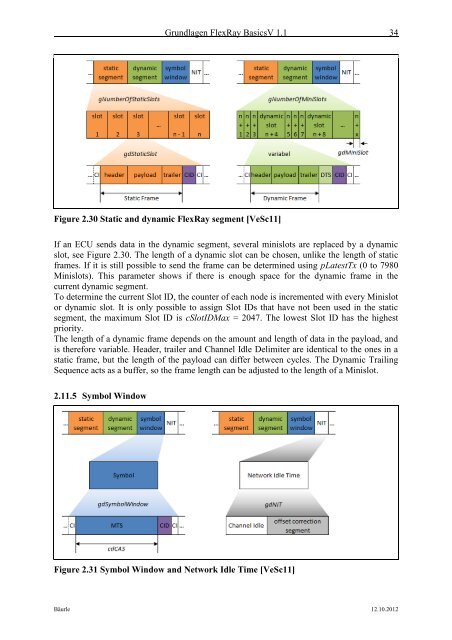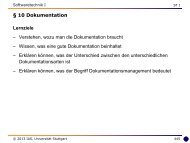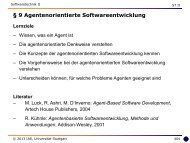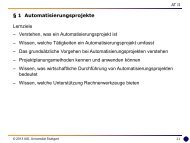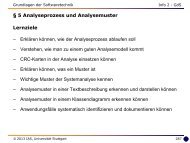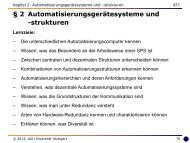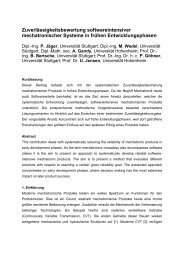Grundlagen FlexRay - Institut für Automatisierungs- und ...
Grundlagen FlexRay - Institut für Automatisierungs- und ...
Grundlagen FlexRay - Institut für Automatisierungs- und ...
You also want an ePaper? Increase the reach of your titles
YUMPU automatically turns print PDFs into web optimized ePapers that Google loves.
<strong>Gr<strong>und</strong>lagen</strong> <strong>FlexRay</strong> BasicsV 1.1 34<br />
Figure 2.30 Static and dynamic <strong>FlexRay</strong> segment [VeSc11]<br />
If an ECU sends data in the dynamic segment, several minislots are replaced by a dynamic<br />
slot, see Figure 2.30. The length of a dynamic slot can be chosen, unlike the length of static<br />
frames. If it is still possible to send the frame can be determined using pLatestTx (0 to 7980<br />
Minislots). This parameter shows if there is enough space for the dynamic frame in the<br />
current dynamic segment.<br />
To determine the current Slot ID, the counter of each node is incremented with every Minislot<br />
or dynamic slot. It is only possible to assign Slot IDs that have not been used in the static<br />
segment, the maximum Slot ID is cSlotIDMax = 2047. The lowest Slot ID has the highest<br />
priority.<br />
The length of a dynamic frame depends on the amount and length of data in the payload, and<br />
is therefore variable. Header, trailer and Channel Idle Delimiter are identical to the ones in a<br />
static frame, but the length of the payload can differ between cycles. The Dynamic Trailing<br />
Sequence acts as a buffer, so the frame length can be adjusted to the length of a Minislot.<br />
2.11.5 Symbol Window<br />
Figure 2.31 Symbol Window and Network Idle Time [VeSc11]<br />
Bäurle 12.10.2012


